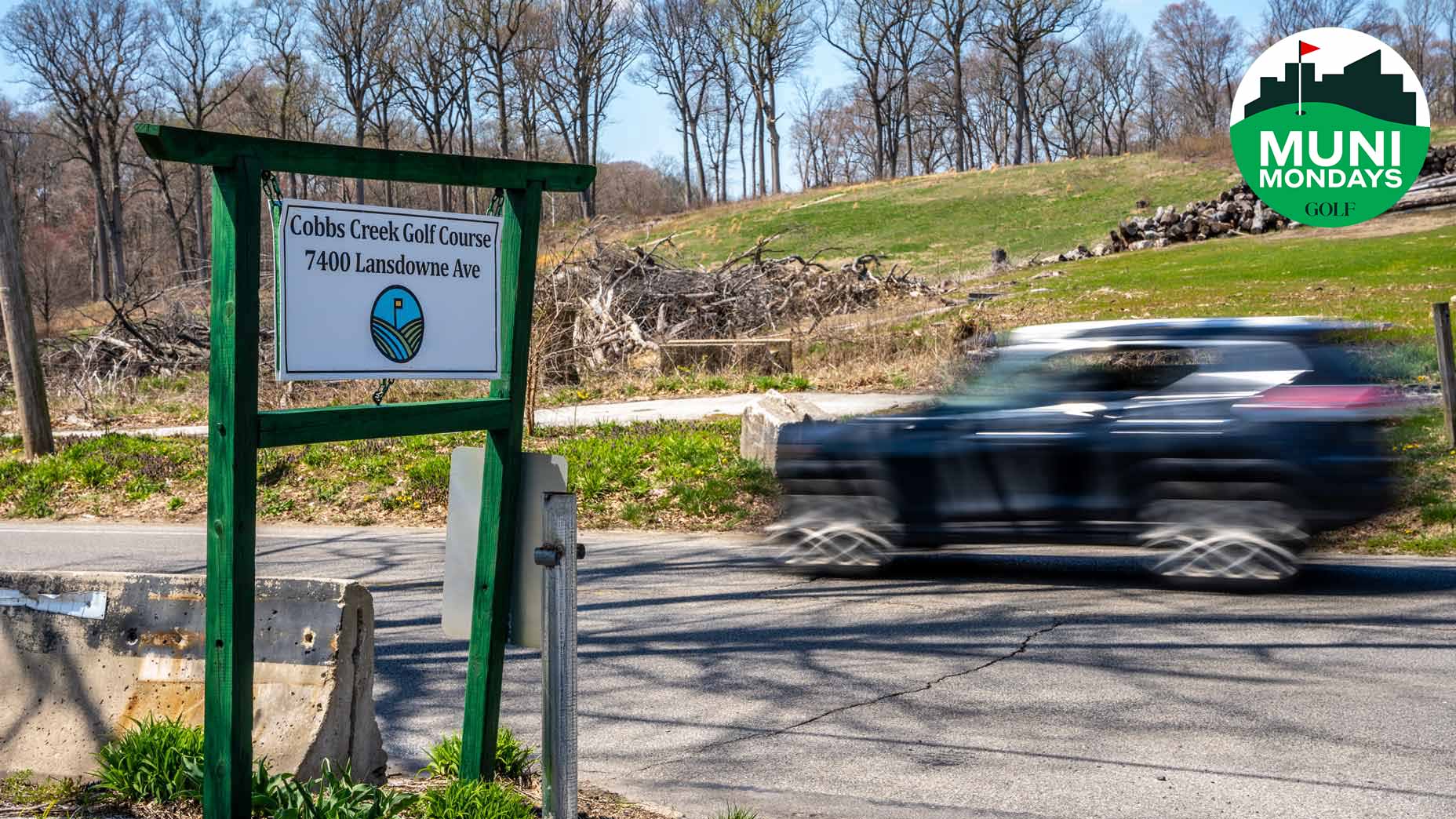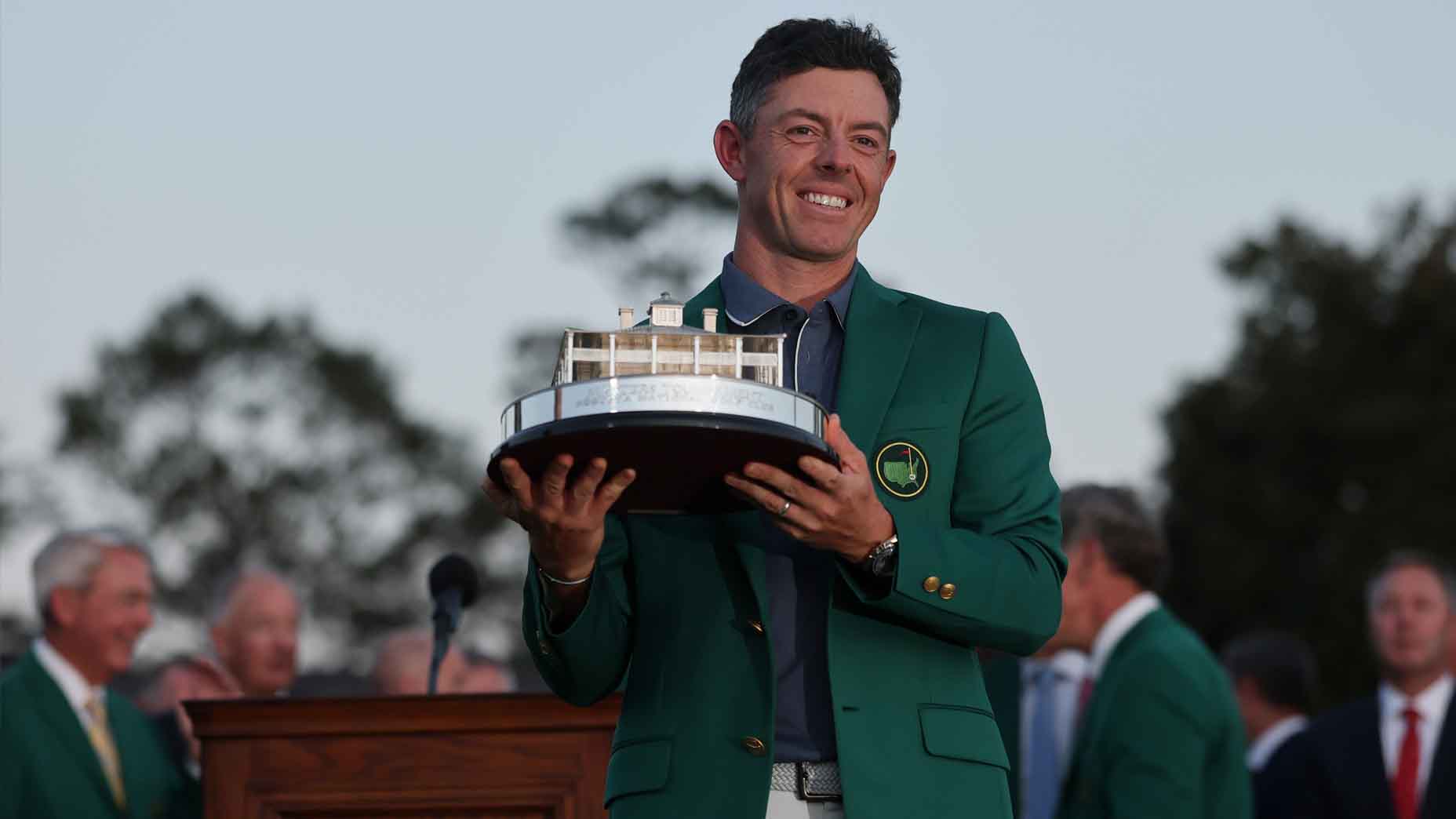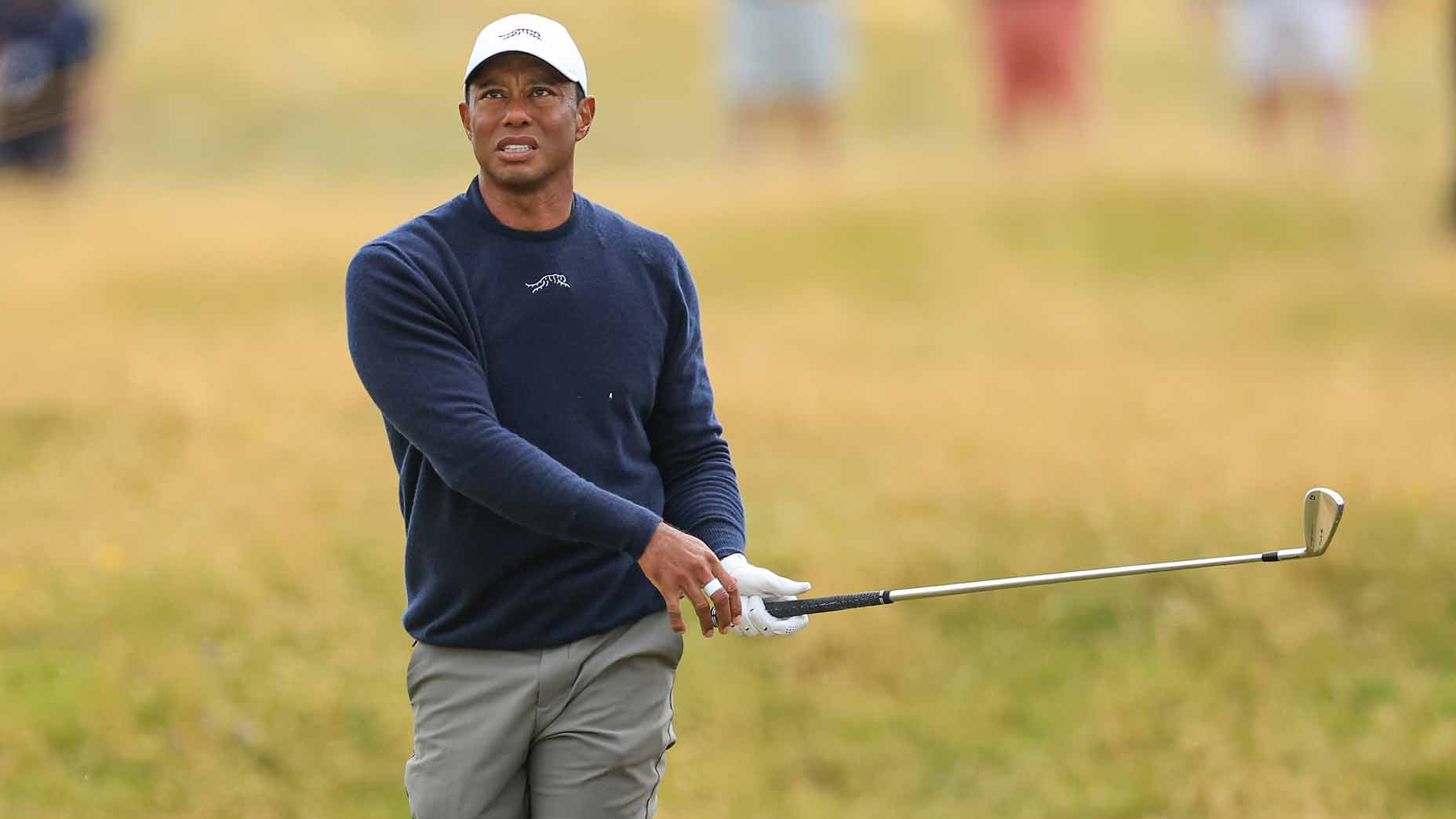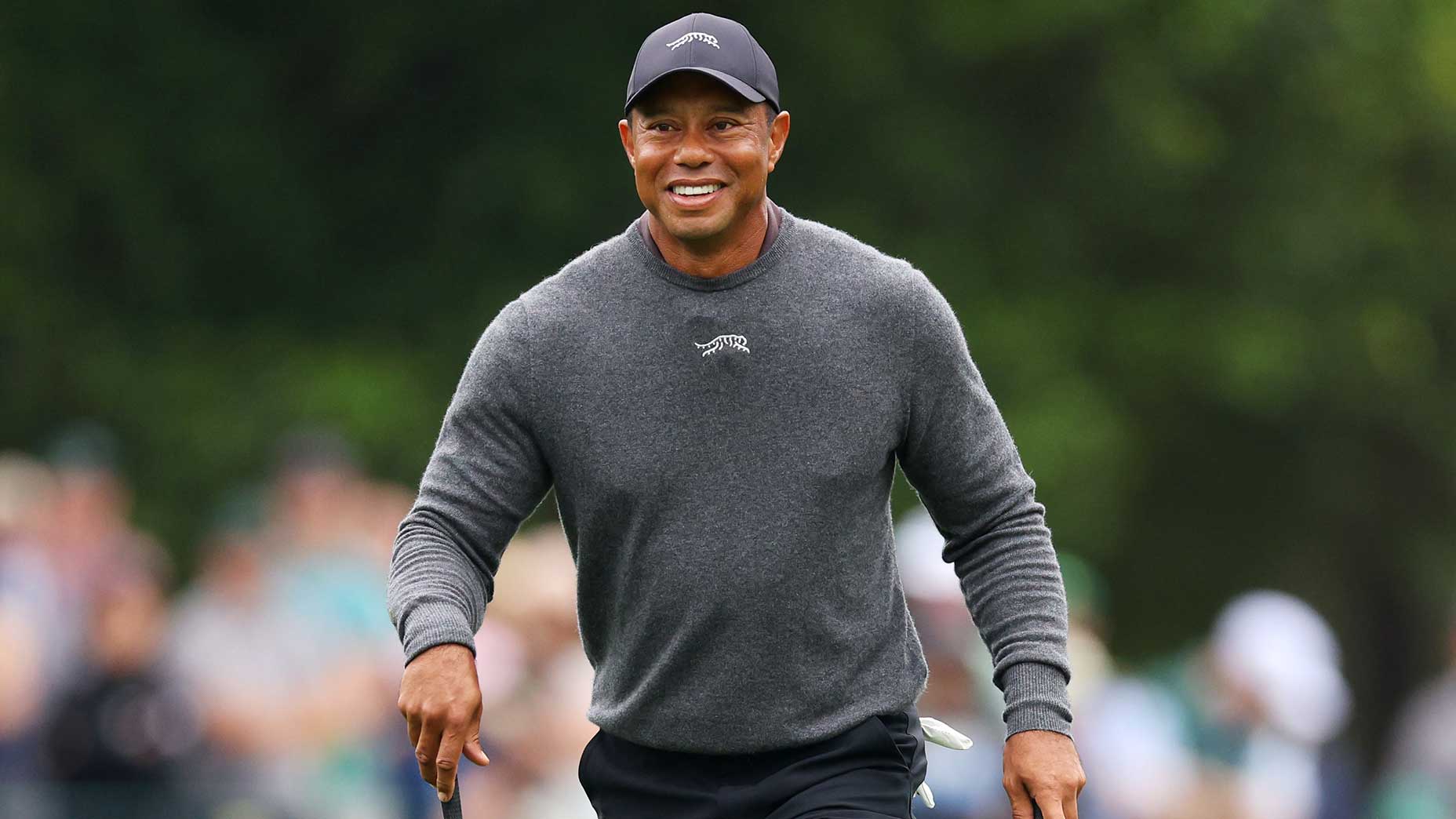How Tiger Woods, Charlie Sifford are linked to this Philadelphia muni’s rebirth
- Share on Facebook
- Share on Twitter
- Share by Email

The Genesis Invitational benefits the TGR Foundation, who is building a TGR Learning Lab at Cobbs Creek.
Getty Images/Graphic: Adam Christensen
Like many kids who grew up in the 1990s and played golf, Chase Johnson idolized Tiger Woods.
“There was a movie called The Tiger Woods Story, and I watched it religiously,” Johnson told me the other day.
The 1998 film chronicled Woods from birth to his groundbreaking win at the 1997 Masters. It didn’t win any Oscars, but that didn’t bother a young Johnson.
“To me, it was the greatest movie,” he said. “And he had mentioned in the movie how he lets his clubs do the talking.”
Woods wasn’t involved with the film’s production, but, in a full-circle moment, his “lets his clubs do the talking” line is almost verbatim to what Woods said in a statement last month when he announced Johnson as the recipient of this year’s Charlie Sifford Memorial exemption, which will allow Johnson to compete alongside Woods at the Genesis Invitational, in Los Angeles, this week.
“[Chase] let his game speak for itself, and that is something I know Charlie would be proud of,” Woods said in the statement.
Just as Woods was Johnson’s idol, Sifford played that role for Woods.
“Tiger’s often said that Charlie was like a grandpa to him when he was on Tour, kind of coming up through his career,” said Mike Antolini, the Genesis Invitational tournament director. “He obviously named his son Charlie after Charlie Sifford.”
The Sifford exemption is awarded each year to players who advance diversity in the game. Sifford is the perfect namesake, having moved to Philadelphia at 17 to escape Jim Crow laws in the South. He picked up golf in 1939 and became the first Black member of the PGA Tour in 1961. Eight years later he won the L.A. Open.
Why Tiger Woods (and Gil Hanse!) are tackling Philadelphia’s most historic muni | Muni MondaysBy: Jack Hirsh
Sifford learned the game at Cobbs Creek, a muni on the edge of Philadelphia with a rich architectural history and noted for welcoming all players. But in the years following Sifford’s introduction there, the course did not age gracefully.
Johnson, too, also came to the game at a quaint public course: Copley Greens, an executive nine-holer outside of Akron, Ohio, where Johnson grew up. He describes the course as being built by a local farmer who simply had a ton of excess land “in his backyard.”
“I started playing there when I was, like, 2,” Johnson recalled. “When I was 5, I won my first tournament, or I had shot I shot a certain score out there, and [the owner] gave me a lifetime membership.”
Courses like Cobbs Creek and Copley Greens are essential for keeping golf accessible. But the game also is at risk of losing them. Cobbs Creek was shuttered in 2019 despite its place in the National Black Golf Hall of Fame, and Copely Greens closed in 2015.
“If we don’t have public golf, I think it’s a real loss for golf as a whole,” said Mike O’Neill, executive vice president of the Cobbs Creek Foundation.
So O’Neill’s foundation did something about it. The organization secured a lease from the city of Philadelphia and began running the course in 2022; last summer the foundation broke ground on a $150 million Gil Hanse-led restoration effort.
In the spring of 2023, given the site’s connection to his idol, Woods and his TGR Foundation got involved.
“Cobbs Creek Foundation was looking for an education partner, and TGR Learning Lab provided everything that they were looking for,” TGR Foundation CEO Cyndi Court said. “And then, of course, the connection between Charlie and him being the first black player on the PGA Tour and calling Cobbs Creek his home course and his relationship as a mentor to Tiger makes it a really impactful and authentic partnership.”
In 2025, the second TGR Learning Lab will open at Cobbs Creek, even before the course’s restoration is complete. Woods will also design a 9-hole short course to accompany the lab.
None of this would have happened had Sifford not wandered onto a bus to take him to the muni one day in 1939.
This week during the Genesis — which Sifford won 55 years ago — that connection will be highlighted throughout the week by the TGR Foundation as one of the main beneficiaries of the tournament.
Inside Tiger Woods’ blueprint for a massive 2024By: Dylan Dethier
“There’s a lot that goes behind the impact at a golf tournament like the Genesis Invitational,” Antolini said. “Obviously, a lot of people watch it wondering who’s going to win. You know, exciting. They come out, they enjoy it, they experience it.
“But at the core, it’s really improving communities. And we’re proud to kind of play a role in helping get that done.”
Fans also will come to see Johnson compete. He’s coming off an outstanding season on the Advocates Professional Golf Association Tour, which strives to bring more diversity to the game and prepare minorities for careers in golf. Last year, Johnson won three times and had seven runner-ups in 11 events on APGAT; he also played in three PGA Tour events, twice making the cut.
He’s got big aspirations for this week.
“I don’t want to set a limit, but a win is obviously goal No. 1,” he said. “To perform and just play to the best of my abilities is my main goal and hopefully that can catapult me into the same categories as J.J. Spaun and Cam Champ [former Sifford exemption recipients who are now PGA Tour winners].”
If Johnson can play his way into the same breath as those names, might he one day try and help to reopen Copely Greens, just like Woods is doing at Cobbs?
“I would absolutely do anything in the world for someone to go back and refurbish that,” he said.
Latest In Travel

Jack Hirsh
Golf.com Editor
Jack Hirsh is the Associate Equipment Editor at GOLF. A Pennsylvania native, Jack is a 2020 graduate of Penn State University, earning degrees in broadcast journalism and political science. He was captain of his high school golf team and recently returned to the program to serve as head coach. Jack also still *tries* to remain competitive in local amateurs. Before joining GOLF, Jack spent two years working at a TV station in Bend, Oregon, primarily as a Multimedia Journalist/reporter, but also producing, anchoring and even presenting the weather. He can be reached at jack.hirsh@golf.com.











